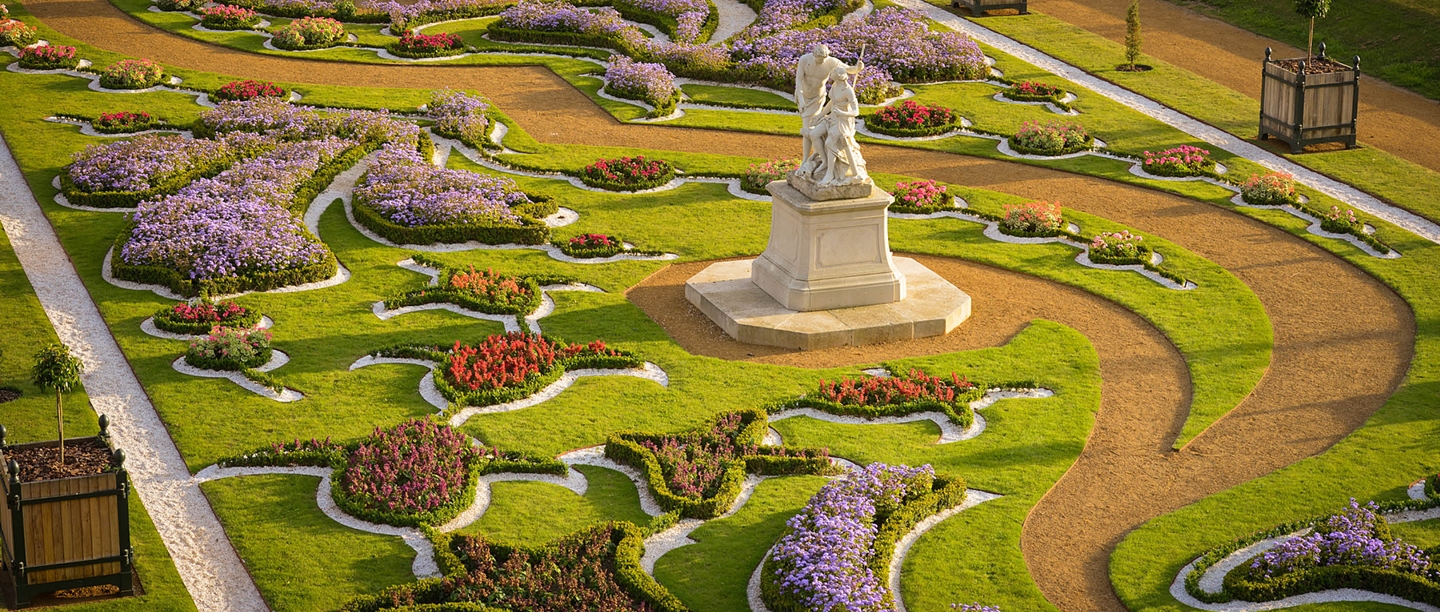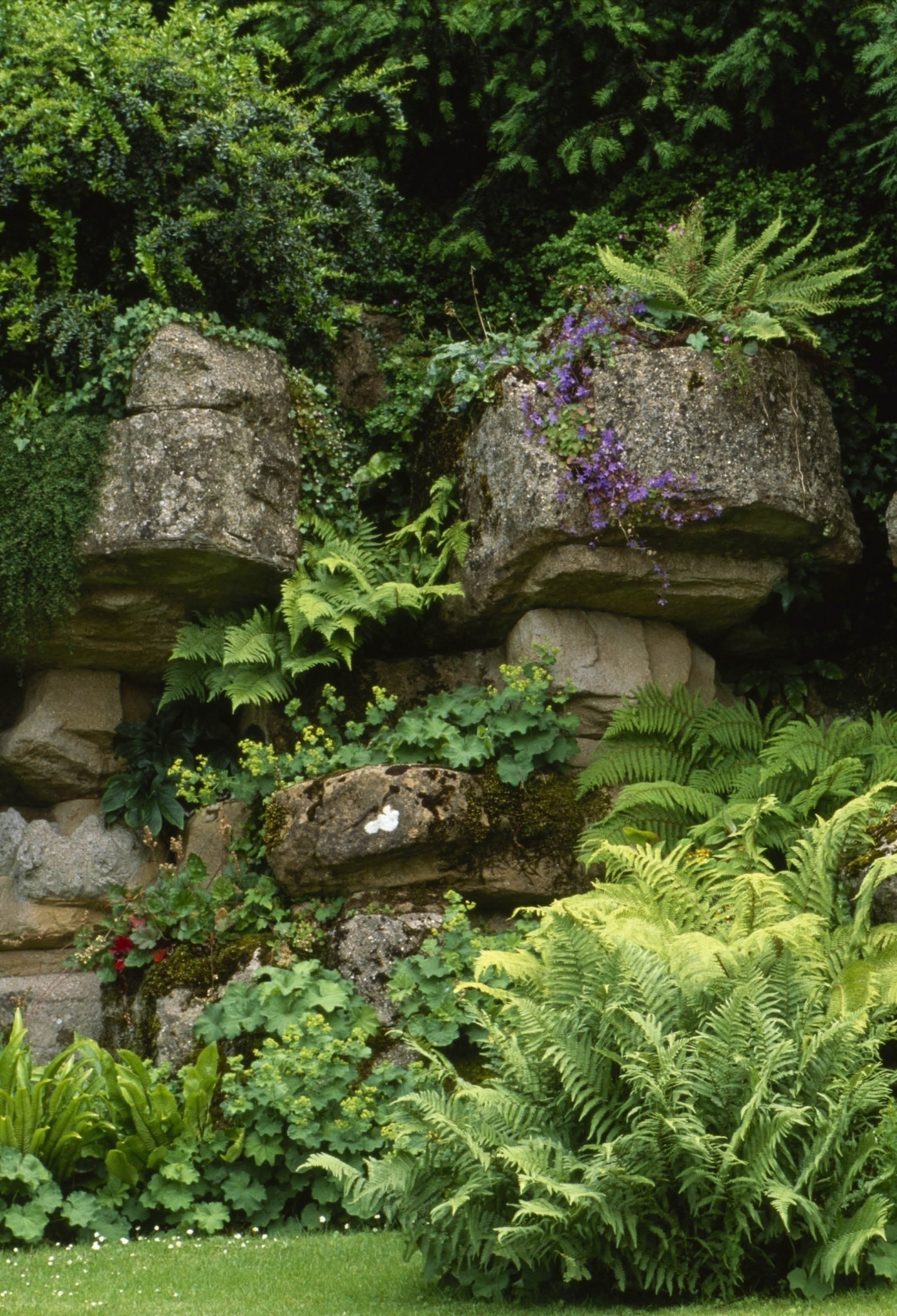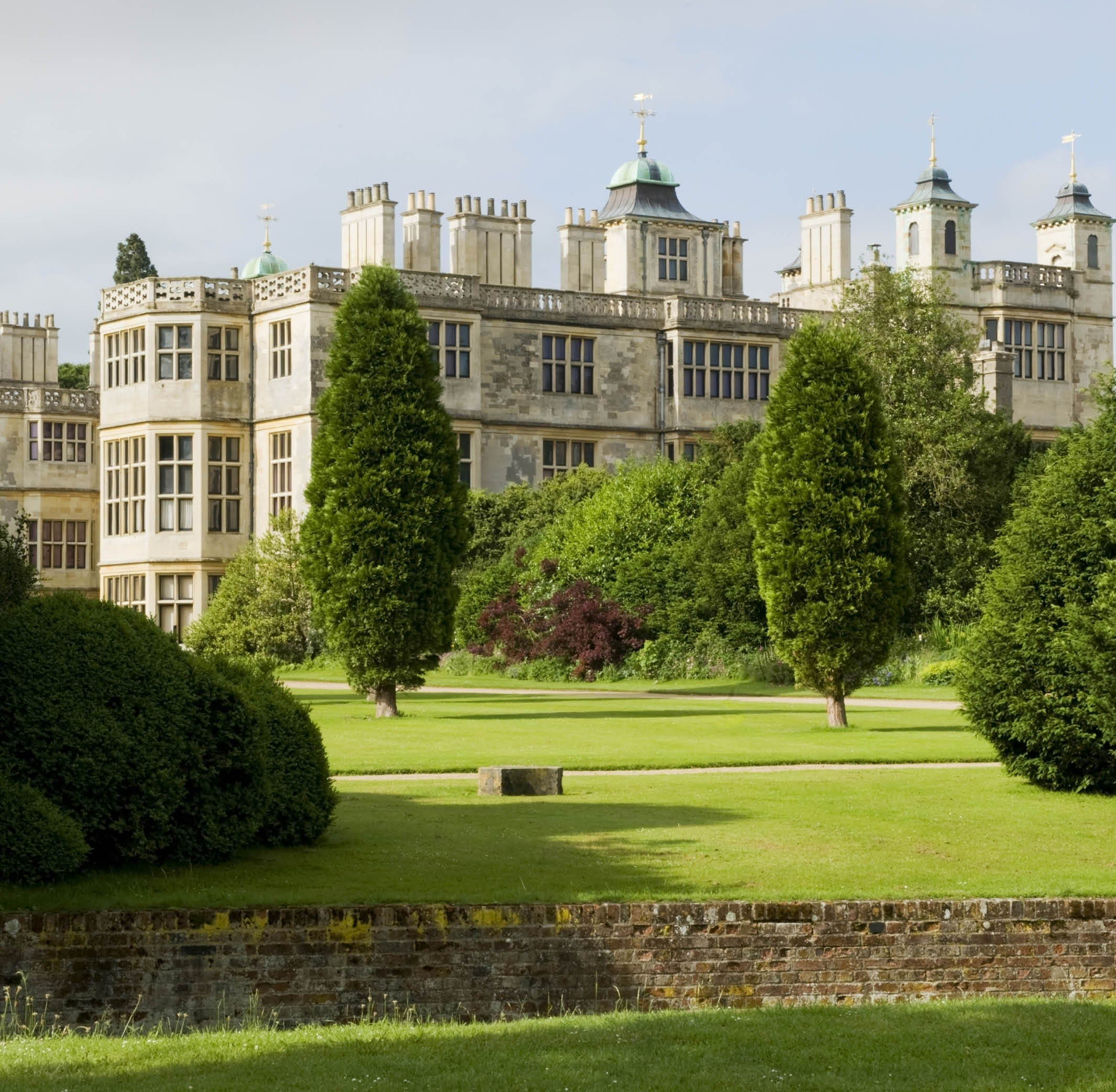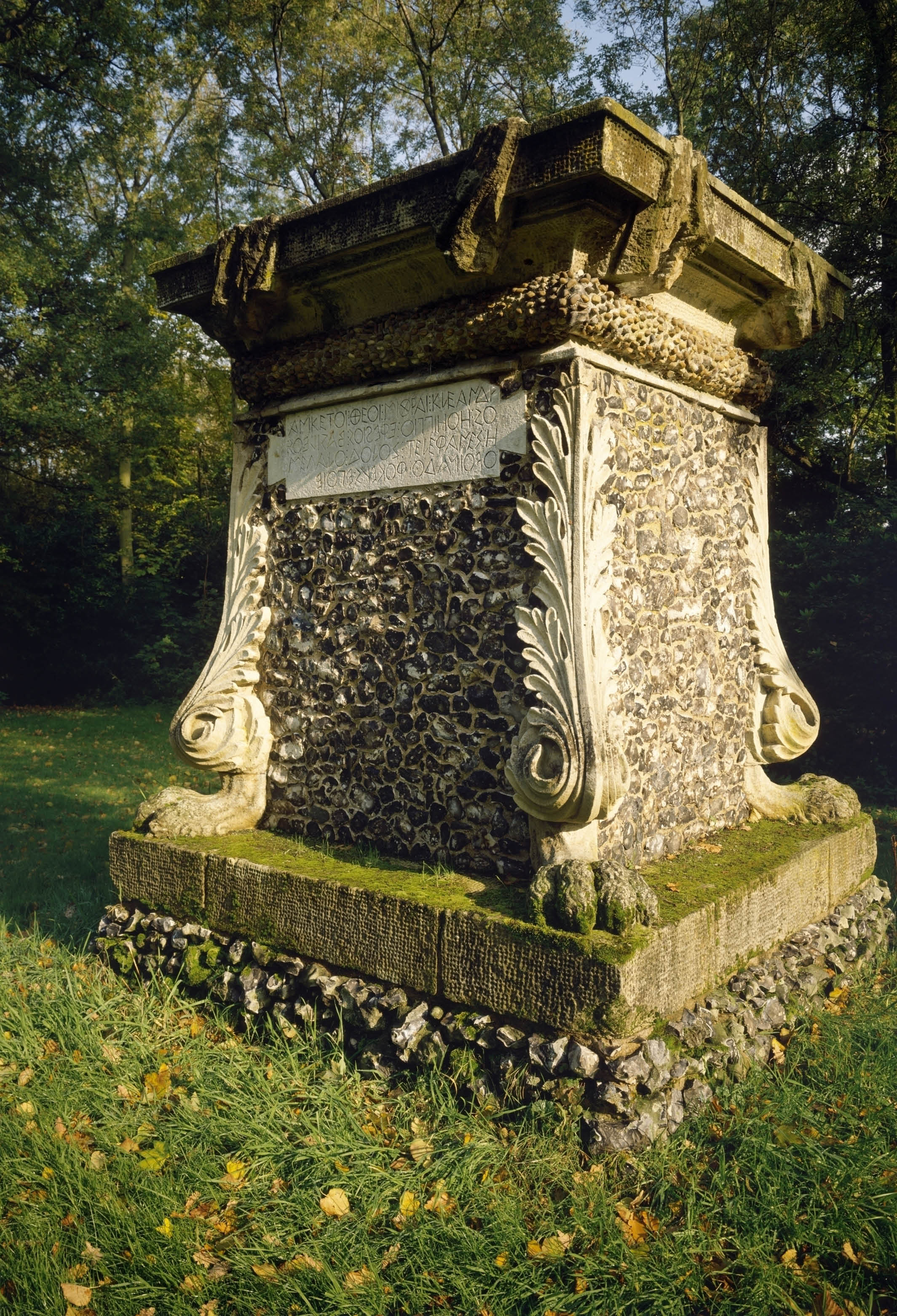Intriguing Grottos
Grottos were popular forms of garden structures in the 18th century. They took the form of caves, made of roughly hewn rock and built into the side or below the level of the surrounding landscape. Grottos took their visitor into a dark subterranean world. Georgian gardens were designed to invoke and inspire a wide range of emotional responses – grottos offered a sense of the foreboding in their dark, damp interiors.
Initial discovery might have struck fear into the visitor, but this soon transformed into awe as they might be rewarded with finding glittering shells and corals. Marble Hill has the remains of a grotto dating from the 1720s within its gardens. You can still see the imprints of the shells which once decorated the interior.
Where to see: Marble Hill and Old Wardour Castle
Awe-Inspiring Fountains
Water features have been important components of garden design across the world for centuries. Water can be forced into jets, caused to crash over cascades or trickled through streams to surprise and delight. The noise made by water features is just as significant a part of the design as the visual experience. Witley Court has one of English Heritage’s largest fountains, spouting a water jet 30 metres high, and in the 1860s was thought to have been one of the largest sculptures in Europe. Tunnels under the fountain allow access to the pumps, meaning the fountain could be turned on suddenly by a hidden operator to surprise and delight.
It was described in the Gardeners Chronicle in 1873:
‘what, with the rush of waters, the exquisite beauty, and the infinite variety of form and size of the jets, the coloured spray, driven hither and thither by the breeze, forming dissolving views of shifting rainbows, and the rush, dash, splash and light feathery spray of the many rising and falling streams or jets, one seems riveted to the spot as by the spell of all the water nymphs’ enchantments. The flowers even seem to lose their brilliance, the trees and shrubs their freshness, as one watches the cool breath of the water in the soft summer air, and listens to its full-toned refreshing music.’
Fountains were also playful and suggestive, particular in their supporting sculptures. The Venus Fountain at Bolsover Castle contains a variety of surprises!
Where to see: Witley Court and Gardens, Bolsover Castle, Audley End House and Gardens, Kenilworth Castle and Elizabethan Garden, Brodsworth Hall and Gardens, Osborne
Water Trickery
Larger water features might involve trickery designed to deceive the eye. In the 18th century, rivers crossing through parkland were sometimes diverted, or their routes widened and sculpted to give the appearance of lake. At Audley End, the landscape designer ‘Capability’ Brown widened the River Cam in front of the house in the 1760s. The bridge designed by the architect Robert Adam at the southern side, and the stone bridge to the north, frame the view. Audley End therefore achieved its ‘lake’, a must-have design feature for the 18th century landscape park, whilst in reality the river flows on for miles. Brown’s work may have surprised Sir John Griffin, as the water bends towards the house, rather than away as his plan showed.
At Kenwood, the bridge at the eastern end of Thousand Pound Pond is not all it seems. ‘Sham Bridge’ was built around c.1767, also by Robert Adam, to provide an ornamental focal point and trick the eye to believe the water continues beyond that point. The ‘bridge’ is in fact just a timber façade.
When the landscape designer Humphry Repton produced his ‘Red Book’ for Kenwood in 1793, he expressed his dislike of Sham Bridge for being:
‘a deception so frequently liable to be detected I think it is an object beneath the dignity of Kenwood...’
Where to see: Audley End House and Gardens and Kenwood House, Wrest Park, Witley Court and Gardens.
'Borrowed’ Landscape and False Forms
Garden designers have long included views of ‘borrowed’ features from the wider landscape to enhance their schemes. It might be hinted that an estate continues over the brow of a hill out of sight with strategically placed tree-lined avenues, or the careful placing of trees to include views of distant landscapes, so as to appear to own this land as well. From Brodsworth Hall, the spire of Woodlands church appears on the skyline.
At Belsay, the earthworks of a prehistoric promontory fort, thought to be a ‘Roman camp’, were incoporated to give an ancient lineage to the landscape and estate.
Sometimes the landscape itself is not all that it seems. At Brodsworth, the distant ‘hills’ surrounding the estate are in fact the slag heaps from the Brodsworth colliery. At Audley End, the ‘rockery’ in the Pond Garden is constructed from ‘Pulhamite’. Pulhamite was created by the 19th century landscaping company James Pulham and Sons. They developed a cement-like formula to cover rubble and crafted it to give the appearance of natural rock forms. Would you be fooled?
Where to see: Audley End House and Gardens for Pulhamite, Brodsworth Hall and Gardens for longer views of Woodlands church on the sky line, Belsay for views of the 'Roman' camp (as the earthworks of the prehistoric promontory fort) incorporated to give an ancient lineage to the landscape.
Ha-ha!
Landscape parks often look as if they roll from the foot of the house, uninterrupted out towards the horizon. But watch your step! Ha-has were used to separate houses and pleasure grounds from the wider parkland to keep grazing animals in their place without disrupting the view.
These sunken walls in ditches were included in English landscape parks from the early 18th century. This artifice gave the illusion of ‘naturally achieved’ landscape harmony, which was an important part of 18th century thought around landscape design. You can find examples at Belsay where there are deer shelters hidden in the ha-ha wall under the terrace. The parterre at Audley End is separated from the parkland by its ha-ha.
Where to see: Audley End House and Gardens, Belsay, Wrest Park, Witley Court and Gardens, Kenwood House
Unexpected Exotics
Surprises can also be found in productive garden spaces. Kitchen gardens with glasshouses were able to produce exotic fruits for the table, to delight and impress visitors. Fruits such as grapes were grown under glass whilst pineapples could be grown in hot boxes of manure.
All required sources of artificial heat to grow in our climate. Glasshouses were fuelled by stoves which had to be stoked all night. Feel the warmth of the glasshouses at Osborne and Down House, both of which showcase a range of exotic plants. Other exotics such as orange and lemon trees were impressive statements of wealth. Orangeries were built to showcase these plants, but they would also be put out in the gardens during the summer months, for the ultimate impressive display of effort needed to keep these plants alive. Explore the orangery and temperate conservatory at Wrest Park.
Another invention was the ‘hot wall’. These high garden walls had furnaces or cavities at the base for embers to be placed in, and warm air could rise and circulate through the network of flues within the wall. Tender fruit trees could be trained to grow against the walls, protected from frost by the heat. The remains of hot walls can be seen at Belsay.
Where to see:
Glasshouses: Audley End House and Gardens, Osborne, Down House, Walmer Castle and Gardens, Wrest Park
Hot Walls: Belsay, Kenwood House
Orangeries/conservatories: Wrest Park, Kenwood House, Witley Court and Gardens
Mysterious objects/Fake or Fortune!
Gardens are often embellished with statuary and sculpture. At Wrest Park, garden visitors unwittingly walk amongst real and replica classical works. In one glade stand a group of five Altars. These are classical, dating from the 2nd or 1st century BC, and were acquired by Amabel de Grey as antiquities in c.1816. They have stood here ever since and are the oldest things in the garden. In the Mithraic Glade, there is also an altar. However, this one dates from 1748, and was created for Jemima, Marchioness Grey and Philip Yorke, Earl Hardwicke. They shared the inside joke with their group of literary friends, and delightedly described the confusion it caused garden visitors who assumed its authenticity and tried to read its inscriptions:
'The altar has gained fame and praise all summer - made of flint and pebbles, two inscriptions, one (as Somebody told Mr Yorke) few people can read, the other nobody can: one in old Greek, the other in strange 'Persick' characters taken out of a book of travels; a very favourite spot with the Marchioness.'
September 1748, letter from Marchioness Grey.
Where to see:
Fountain Sculpture: Wrest Park, Brodsworth Hall and Gardens, Kenilworth Castle and Elizabethan Garden
Classical Statues: Osborne, Witley Court and Gardens
-
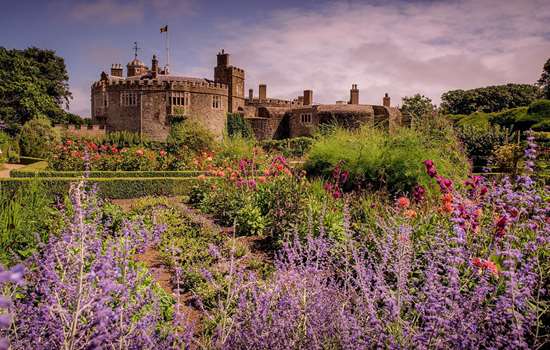
More Historic Gardens
Explore more about our gardens and their fascinating history.
-
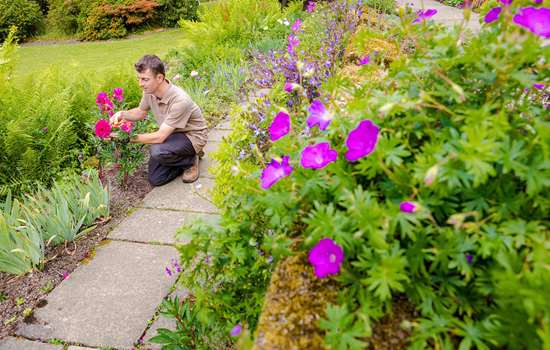
Tips from our Historic Gardeners
Inspired by the past and present, here are some top tips for protecting your plants at home.
-

Become a member
Enjoy unlimited access to hundreds of historical sites with our annual membership.
